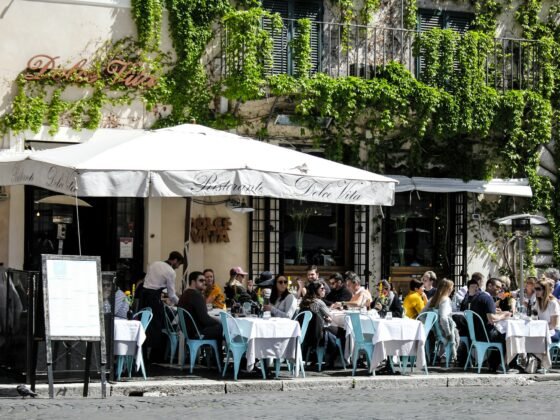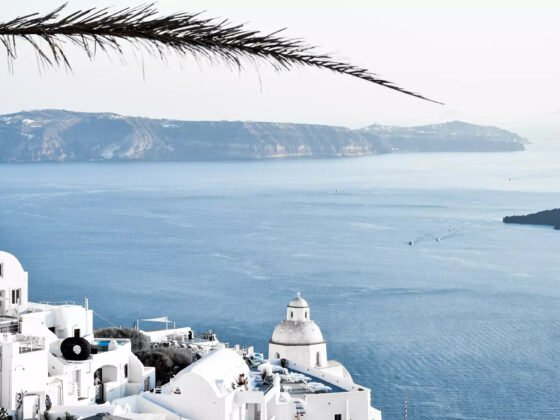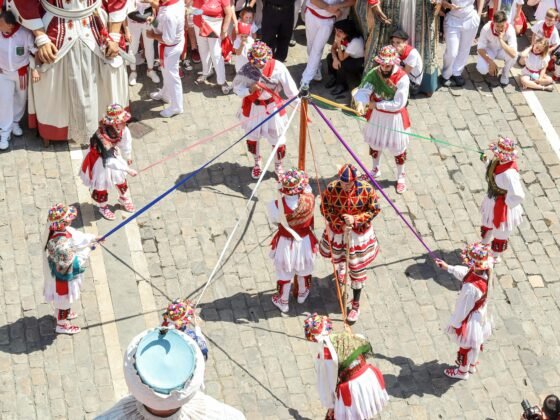Zambia Holidays - Tours & Adventure Travel Guide
PureTravel Says
"Zambia is an adventurer's playground. In addition to some of the world's best safari opportunities, Dr. Livingstone's old stomping grounds are home to Victoria Falls - twice as tall as Niagara and several times longer. The roaring waters south of the Falls make for some of the world’s best white-water rafting. Safaris on foot or by boat are sure to turn up memorable encounters with Zambia’s diverse wildlife, which includes large herds of elephant, buffalo, antelope and hippo, as well as lions, leopards and giraffes."
-----------------------------------------------------------
Zambia Holiday Highlights
Walking & Trekking - Zambia was the site of one of history’s most famous treks, the Scottish missionary Dr. David Livingstone’s travels throughout the area. Dr. Livingstone was the first European to set eyes on Victoria Falls, and named it for the Queen. The Luangwa Valley, which marks the end of the Great Rift Valley, is a popular destination for modern travellers. Trekkers in the Zambian bush should travel with experienced guides due to large, potentially dangerous wildlife species. Guided tours in the Valley can be arranged for a day or a multi-week adventure.
Other possible trekking destinations depend on your own passions. Lochinvar National Park, known among birders for the variety of rare birdlife to be seen there, is also the only home of the Kafue lechwe, a semiaquatic antelope. True bush enthusiasts will love Liuwa Plain National Park, which contains no roads whatsoever. The wildebeest migrations across the plain are considered to rival those of the Serengeti.
Rafting - The Zambezi rapids are no mere good ride. The trip down Livingston’s river is commonly considered the best whitewater rafting on the planet. Every year, around fifty thousand people strap on a helmet and cling to their paddle as they shoot the most exciting rapids around. Adventurers can float the Zambezi for over a week, camping on remote sandy beaches and glimpsing incredible wildlife along the shores. The stretch just south of the falls contains some of the most notorious rapids in the rafting world, including the Stairway to Heaven, Devil’s Toilet Bowl, and Oblivion rapids. Although the rapids are Class V, no previous rafting experience is required given that you make the trip with a qualified guide.
Canoeing - It’s difficult to say whether you nab a better safari experience by foot or by boat, but in Zambia you can give both a try and make your own call. The waters and shores of the lower Zambezi are home to some of the finest wildlife and birdwatching in the region. Floating between Mana Pools and Lower Zambezi National Parks, you can be certain of seeing hippos, Cape buffalo, and elephants. Baboons are also a common sight on canoe safaris. In addition to the wildlife, you’ll experience all of the spectacular sunsets, lush landscape, and deep tranquillity of the Zambezi.
Wildlife - While encroachment by agriculture and human settlements have relegated some of Zambia’s most extraordinary wildlife species, including the rhino, Cape buffalo, elephant, and lion, almost exclusively to parks, these thrilling species still live wild in protected areas, existing as they always have and thrilling adventurous visitors. Other large animals, including the leopard, Nile crocodile, spotted hyena, hippo, and antelope, are still found in numbers over wide areas. All of Zambia’s 19 national parks are surrounded by a buffer zone known as a Game Management Area, for a total protected area which makes up a high percentage of the country. Aside from the “big 5” of safaris, Zambia is home to several primates, cheetahs, wild dogs, zebras, giraffes, over a dozen antelope species, aardvarks, and almost 800 species of birds.
-----------------------------------------------------------
When To Go
The Zambian year is divided into the dry and wet seasons. The dry season (May to October) is a great time for rafting, canoeing, wildlife viewing, and trekking. You’re also able to see Victoria Falls’ striking rock formations due to the low water level. The rainy season (November to April) is better for birdwatching, and is when Victoria Falls is at its peak and most impressive. Flooding caused by the rains can make canoeing and rafting dangerous.
Also consider timing your visit to coincide with one of Zambia’s many festivals. Kuomboka, the most famous, commemorates the migration of the Lozi king from his dry season abode in Lealui to his wet season palace downriver in Limulunga. A fleet of barges accompanies the king to his destination, where a great feast is prepared. Kuomboka takes place around Easter.
-----------------------------------------------------------
Zambia Top Tips
- Trekking with the assistance of a knowledgeable and qualified guide will ensure your safety as well as enhance your experience.
- Distances between towns and attractions can be large, and transportation for independent travellers can sometimes be difficult to arrange.
- Anti-malarial medications are recommended for all visitors to Zambia.
- Tap water throughout the country is generally not drinkable.
- Rafting the Zambezi
- Trekking through the Luangwa Valley
- Birding at Lochinvar National Park
- Elephant-back safari through the Masuwe River Valley
- Canoeing the lower Zambezi
- Trekking in Lower Zambezi National Park
- Visit Victoria Falls
-----------------------------------------------------------
Zambia Holidays In Focus
Walking, Trekking and Hiking - The Luangwa Valley is the crown of Zambia, and one of the top safari destinations on the continent. Any first-time trekker in Zambia should have the Luangwa underfoot; while it is very famous, it has become a safari mecca for excellent reasons. On a week long trek through South Luangwa National Park, you’ll walk a trail echoing with the calls of wild baboons. It’s important to trek with a guided group; the Luangwa has many dangers in store for the solo adventurer, from lions to black mambas. The Luangwa Valley is one of Africa’s most pristine wilderness areas, and one of the best places to look for a leopard. Also, despite the Luangwa’s renown, its remoteness from any major city cuts way down on the number of tourists you’ll be sharing the trail with. The observant can hope to see as many as 50 mammals, and it’s the only place to see Thornicroft's giraffe and Cookson's wildebeest.
Zambia’s other national parks each have their unique highlights, although some have less extensive walking trails. Lochinvar National Park is well known among birders for the over 400 species of birds which can be found there. It’s also one of the only homes of the Kafue lechwe, a semiaquatic antelope. Its’ widespread hooves makes it uniquely well-suited to its marsh habitat. Another destination which does have well-developed trails is the Lower Zambezi National Park. Home to herds of elephant and Cape buffalo as well as lions and wild dogs, the Lower Zambezi’s trails wind through plains dotted with acacias; LZNP is Zambia’s newest park and it has yet to be well developed, so apart from the occasional lodge, trekkers venture into a true wilderness. The birdlife is exceptional, and includes fish eagles, bee eaters, and the rare red winged pratincole. The northern side of the park is made up of drier scrublands with scattered trees, while the lowlands are covered in mopane forest. A canopy of mopane makes for a more pleasant walk in the heat of the day. On most tours through LZNP, support staff will set up your camp in advance, leaving you free to appreciate the scenery and learn more about the unique ecosystems. A few lodges also accommodate tourists.
Rafting - The stretch of the Zambezi River just below Victoria Falls rates on every professional rafter’s top five list, if it’s not number one. The run from Victoria Falls to Batoka Gorge is acclaimed as the wildest one day whitewater run on earth, and deservedly so. Individual rapids with names like “Stairway to Heaven” and “Oblivion” have become infamous as difficult, long and violent challenges. The run is so well-regarded that it’s become a regular feature on most tourists’ itineraries, with around fifty thousand people taking the plunge every year. Rafters can also continue beyond that famous first day, taking on rapids of lesser celebrity and camping on remote, sandy beaches where baboons regularly investigate campsites.
Although it seems like the most extreme of sports, you don’t actually need much rafting experience to take on the Zambezi. It’s important to choose a qualified guide with a good reputation, but thanks to flotation devices, it’s no longer even necessary that you be a proficient swimmer. All that is required is enthusiasm and a willingness to heave to your paddle when your guide gives the word. You should, of course, confirm that your guide is certified in advanced first aid and that you are covered by adequate travel insurance in case of mishap. Keep in mind that while a plastic helmet and life-vest may seem like insufficient protection against the roiling waters, injuries are a rarity. Do, however, expect to get flipped into the Zambezi!
Canoeing - The Zambezi is not only a frothy challenge of rapids and rocks, it’s known as an excellent waterway for canoeing and kayaking. Many tour operators organize canoe safaris down the lower, less tumultuous Zambezi, where you can expect to see big game including hippo, Cape buffalo and elephant in and around the river. Some guides run canoe safaris specifically for children, with an emphasis on education. Exclusive safaris can also be arranged for avid photographers who know in advance that they’ll want more flexibility in order to capture that perfect shot of a crocodile or eagle.
The lower Zambezi is well connected to some superb walking areas, including Lower Zambezi and Mana Pools National Parks, making it easy to combine activities into one trip. Some outfitters offer combination canoeing and walking safaris for maximum wildlife sightings and the best of land and water. Because the Zambezi is the boundary between Zambia and Zimbabwe, schedule all of your landings and activities on one shore of the river to avoid visa issues or other complications.
Excellent canoe trips can also be had on the upper Zambezi, above Victoria Falls. The Lugenda River, which meanders through the little-visited Niassa Reserve, can also be canoed. Niassa is home to healthy populations of the endangered African wild dog. The remote, tranquil waters and lack of other boaters feel more like the “real Africa” for some visitors.
Wildlife and Safaris - By boat or by foot, a trip to see Zambia’s menagerie is an experience for a lifetime. The rhino, Cape buffalo, elephant, and lion are today almost exclusively relegated to parks, making any trip a lesson in conservation and the need for intervention on behalf of these wonderful animals. The good news, of course, is that these amazing and improbably species still live wild in protected areas, existing as they always have and thrilling adventurous visitors. Other large animals, including the leopard, Nile crocodile, spotted hyena, hippo, and antelope, are still found in numbers over wide areas. All of Zambia’s 19 national parks are surrounded by a buffer zone known as a Game Management Area, for a total protected area which makes up a high percentage of the country. If the government can get a better handle on monitoring of protected areas and enforcement of anti-poaching law, many of Zambia’s megafauna celebrities stand a good chance of continued survival.
Most tourists focus on a few must-see animals, but aside from the “big 5” of safaris, Zambia is home to several primates, cheetahs, wild dogs, zebras, giraffes, over a dozen antelope species, aardvarks, and almost 800 species of birds. Birding highlights include the rare and dangerous-looking shoebill stork, which resides around the Bangweulu Floodplain and nearby Kasanka National Park, and Chaplin’s Barbet, commonly seen in the Nkanga River Conservation Area. The annual wildebeest migration across the Liuwa Plains rivals that of the Serengeti.
To see the greatest variety of wildlife, you may want to get around on something other than a kayak or your own two feet. In addition to the traditional 4WD vehicle game drive, some operators offer elephant back safaris. Sign on for one of these tours in Livingstone or Victoria Falls, and spend the day making your way through pristine bush mounted on an enormous pachyderm. It’s often easier to approach wild animals on elephant back, and they make an excellent platform from which to photograph your adventure.
-----------------------------------------------------------
Classic Itineraries










